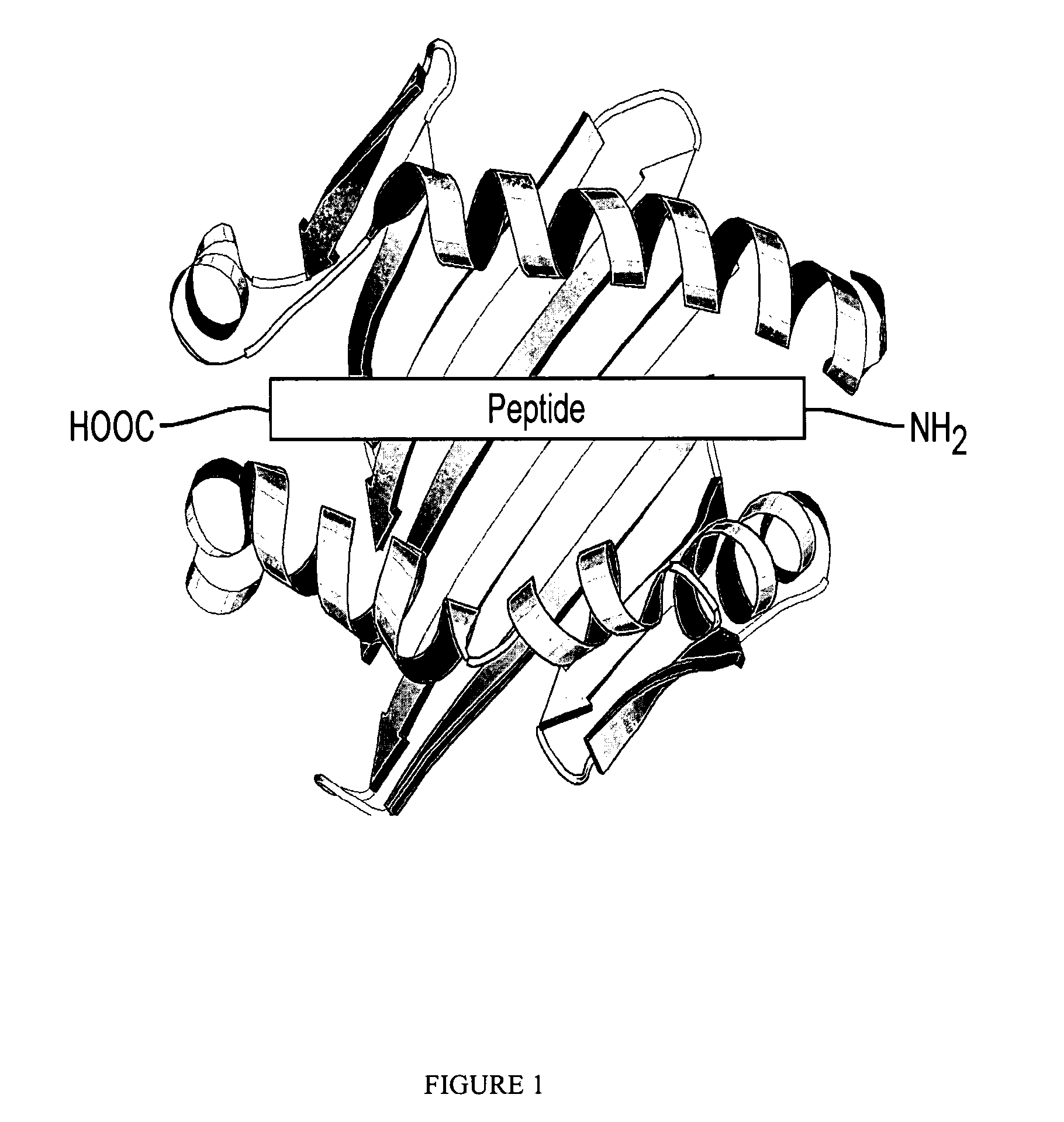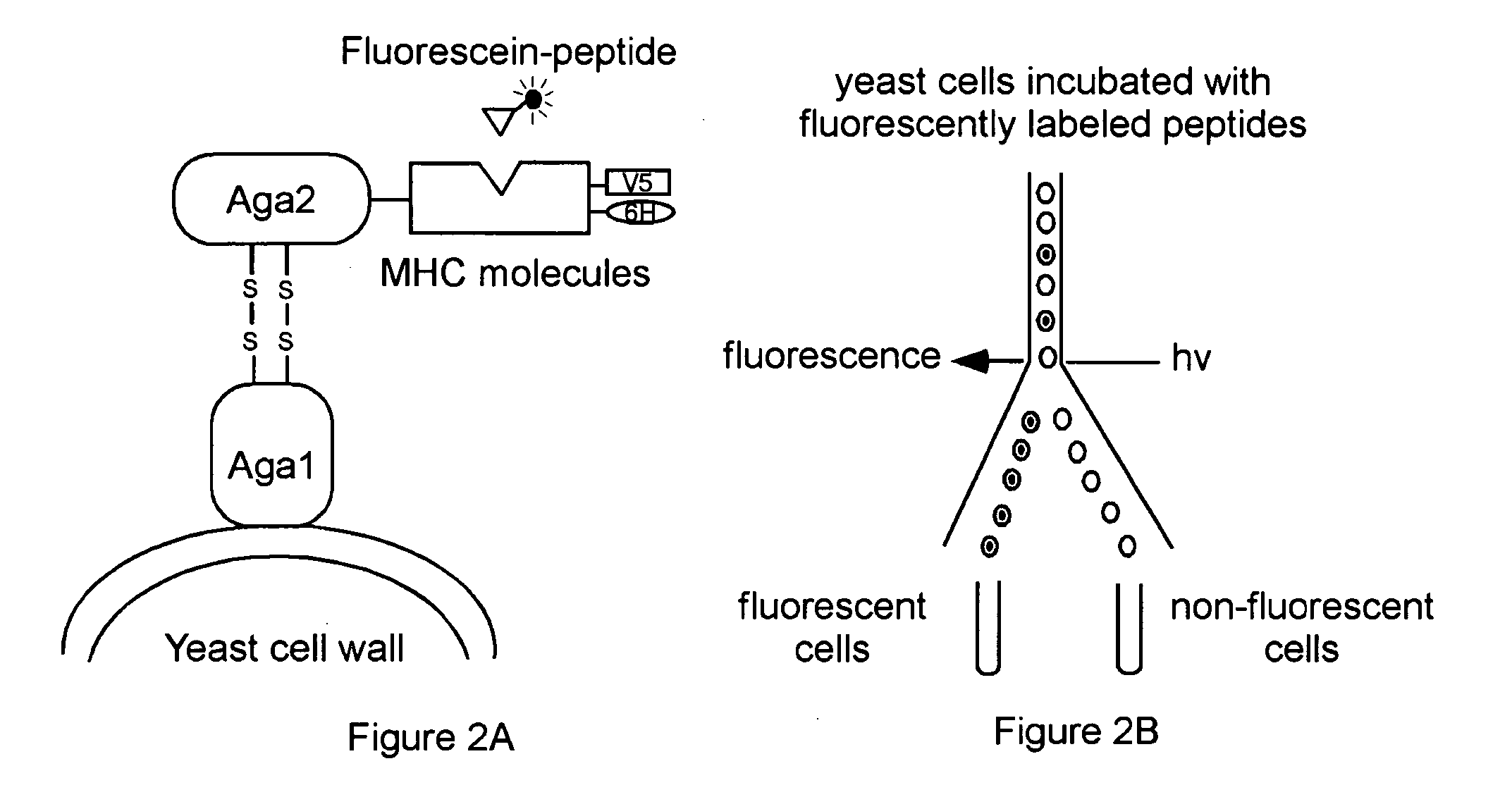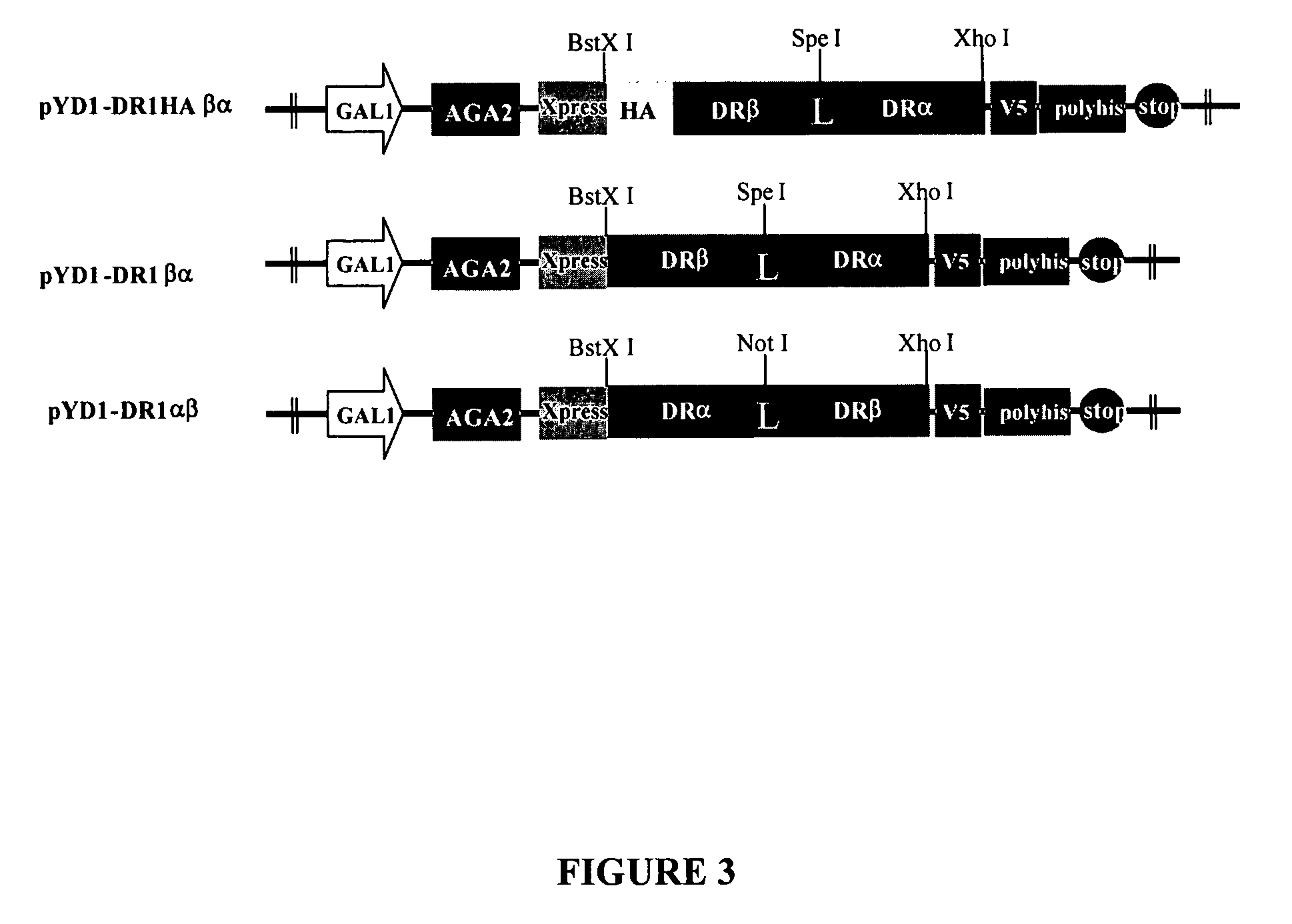Universal peptide-binding scaffolds and protein chips
- Summary
- Abstract
- Description
- Claims
- Application Information
AI Technical Summary
Benefits of technology
Problems solved by technology
Method used
Image
Examples
Embodiment Construction
[0027] The single-chain Class II MHC molecule binding site is described herein as an example of the binding domain used in the universal peptide-binding scaffold, however, other universal peptide-binding domains may be used in the universal peptide-binding scaffold, including SH2 domains, SH3 domains, PDZ domains, and MHC class I peptide binding domains, as known in the art, using the disclosure herewith.
[0028] The sequences of each of the domains are discussed in the following references: SH2 domain: “Conservation analysis and structure prediction of the SH2 family of phosphotyrosine binding domains.” Russell R B, Breed J, Barton G J, FEBS Lett. 1992, 304(1):15-20; SH3 domain: “SH3—an abundant protein domain in search of a function.” Musacchio A, Gibson T, Lehto V P, Saraste M. FEBS Lett. 1992, 307(1):55-61; PDZ domain: “Evidence for PDZ domains in bacteria, yeast, and plants.” Ponting C P. Protein Sci. 1997, 6(2):464-8; MHC class I: the HLA-A2 sequence is provided here.
[0029] Hu...
PUM
| Property | Measurement | Unit |
|---|---|---|
| Molar density | aaaaa | aaaaa |
| Molar density | aaaaa | aaaaa |
| Fluorescence | aaaaa | aaaaa |
Abstract
Description
Claims
Application Information
 Login to View More
Login to View More - R&D
- Intellectual Property
- Life Sciences
- Materials
- Tech Scout
- Unparalleled Data Quality
- Higher Quality Content
- 60% Fewer Hallucinations
Browse by: Latest US Patents, China's latest patents, Technical Efficacy Thesaurus, Application Domain, Technology Topic, Popular Technical Reports.
© 2025 PatSnap. All rights reserved.Legal|Privacy policy|Modern Slavery Act Transparency Statement|Sitemap|About US| Contact US: help@patsnap.com



